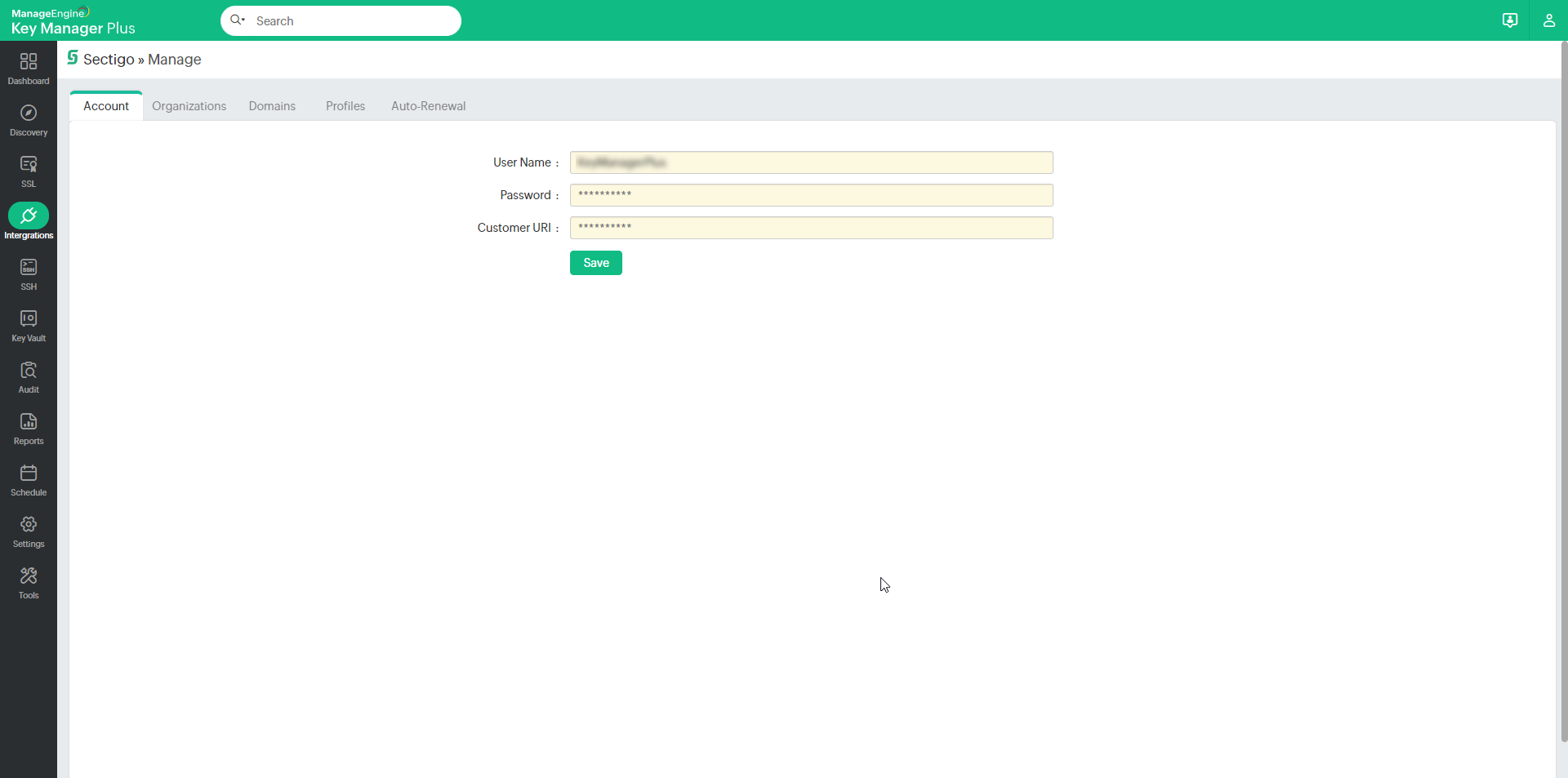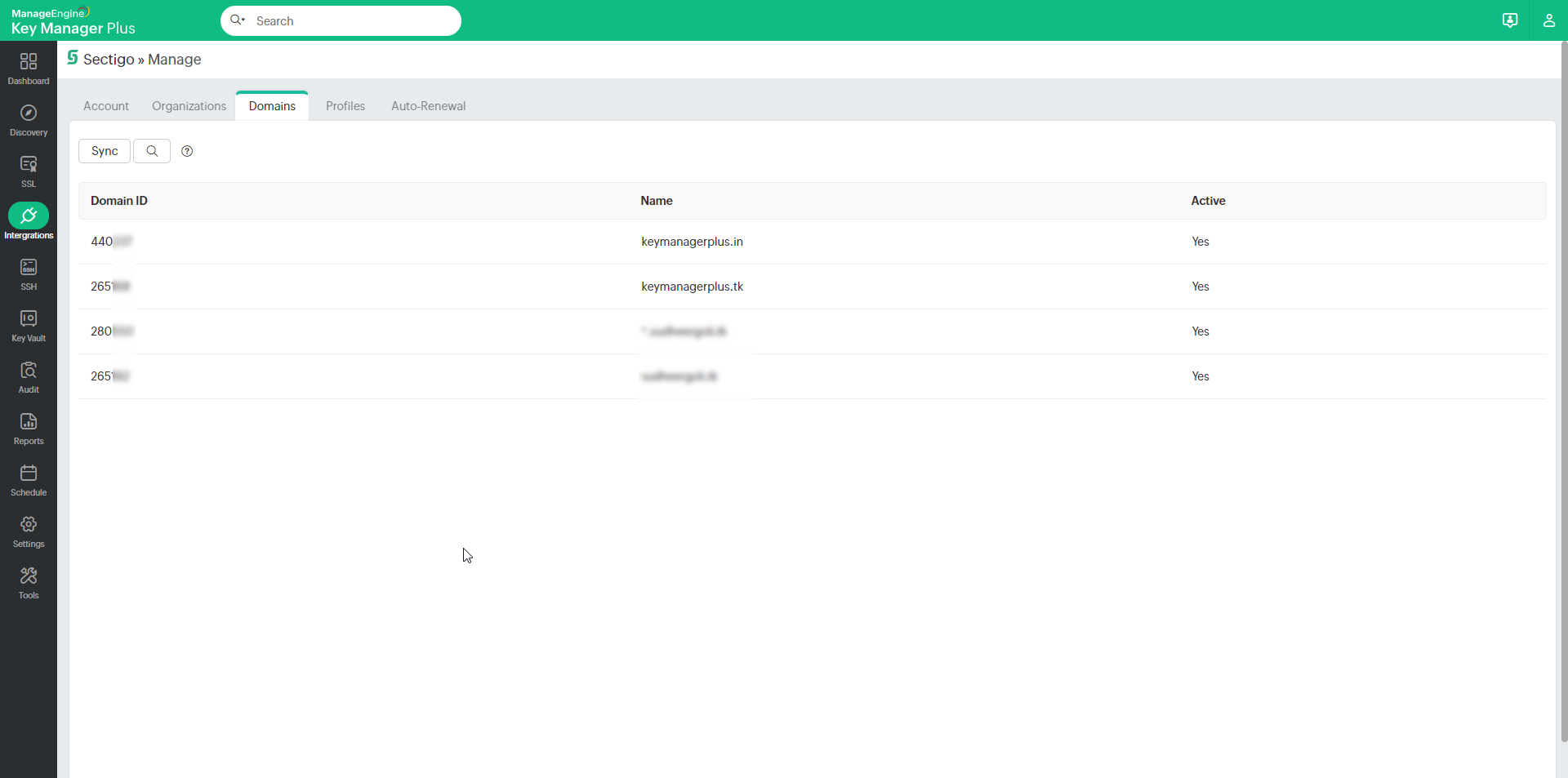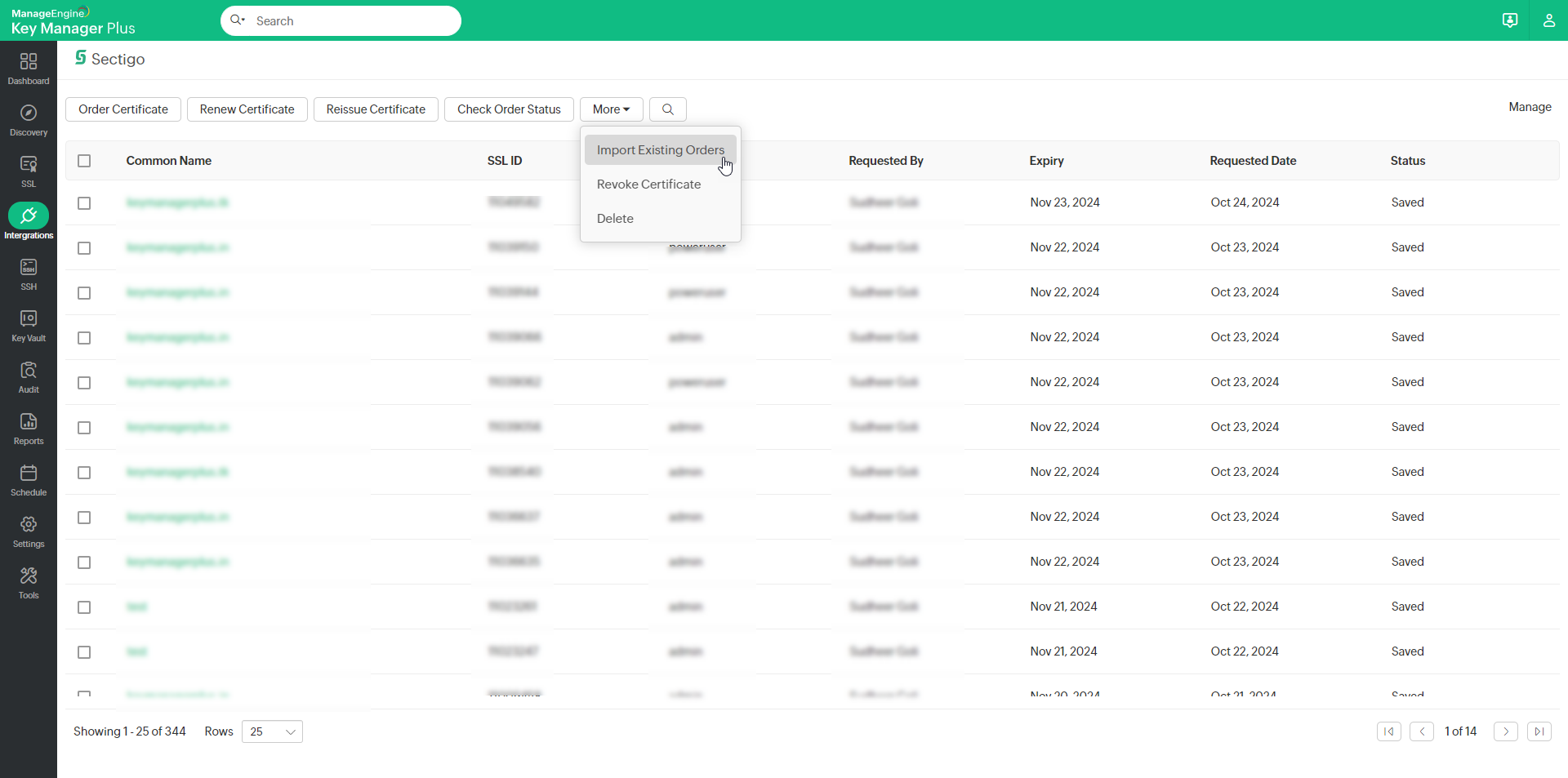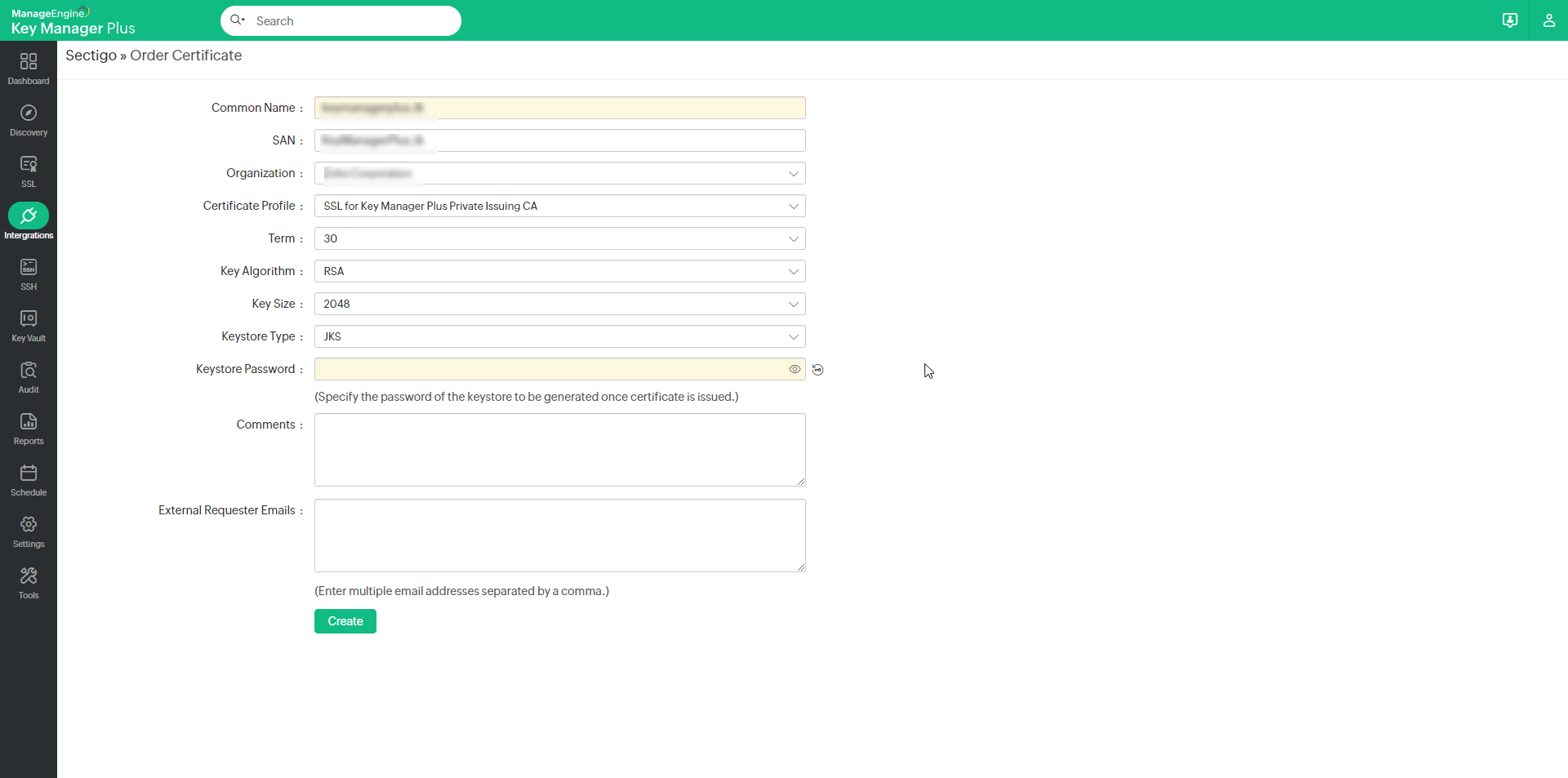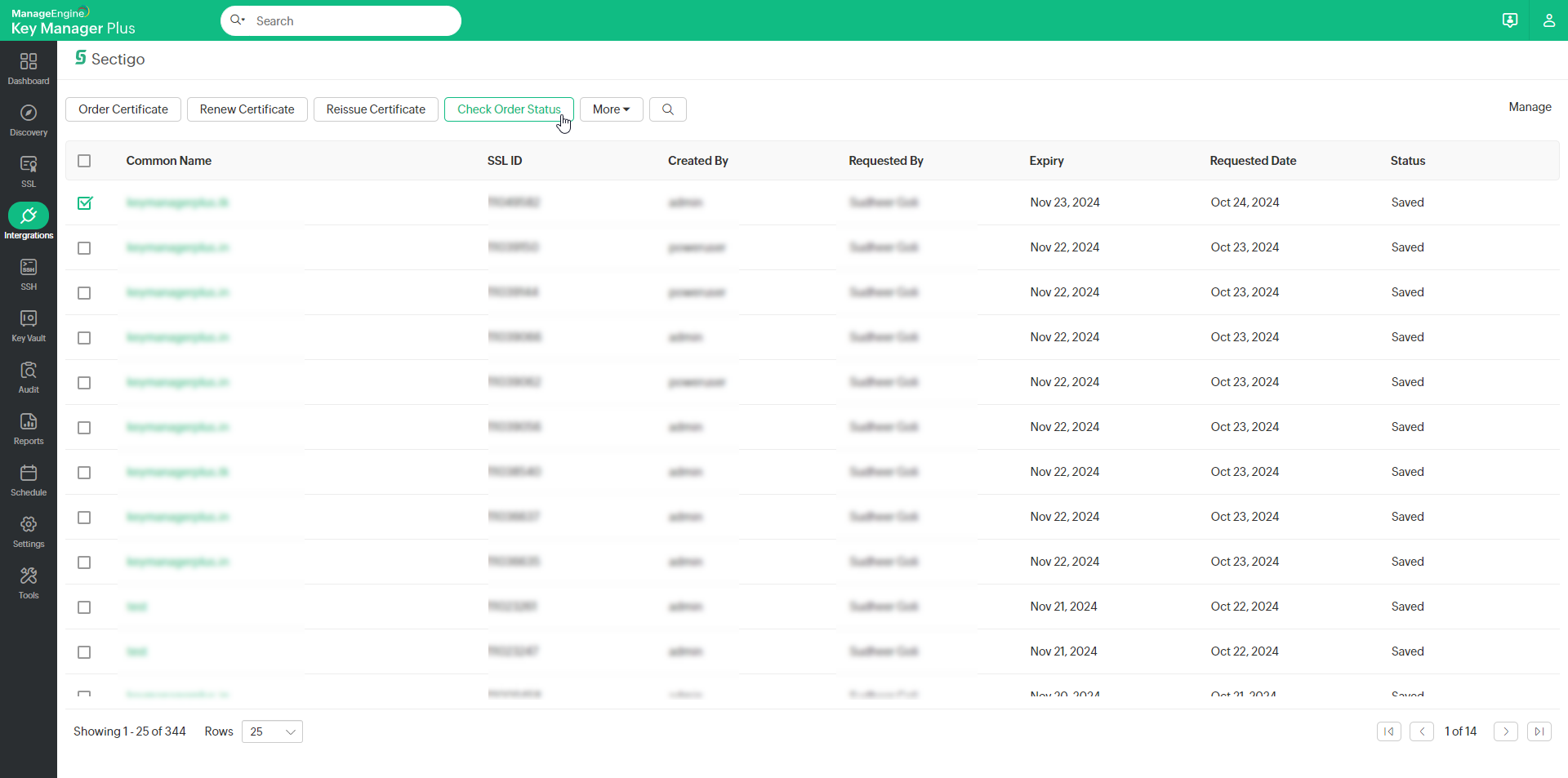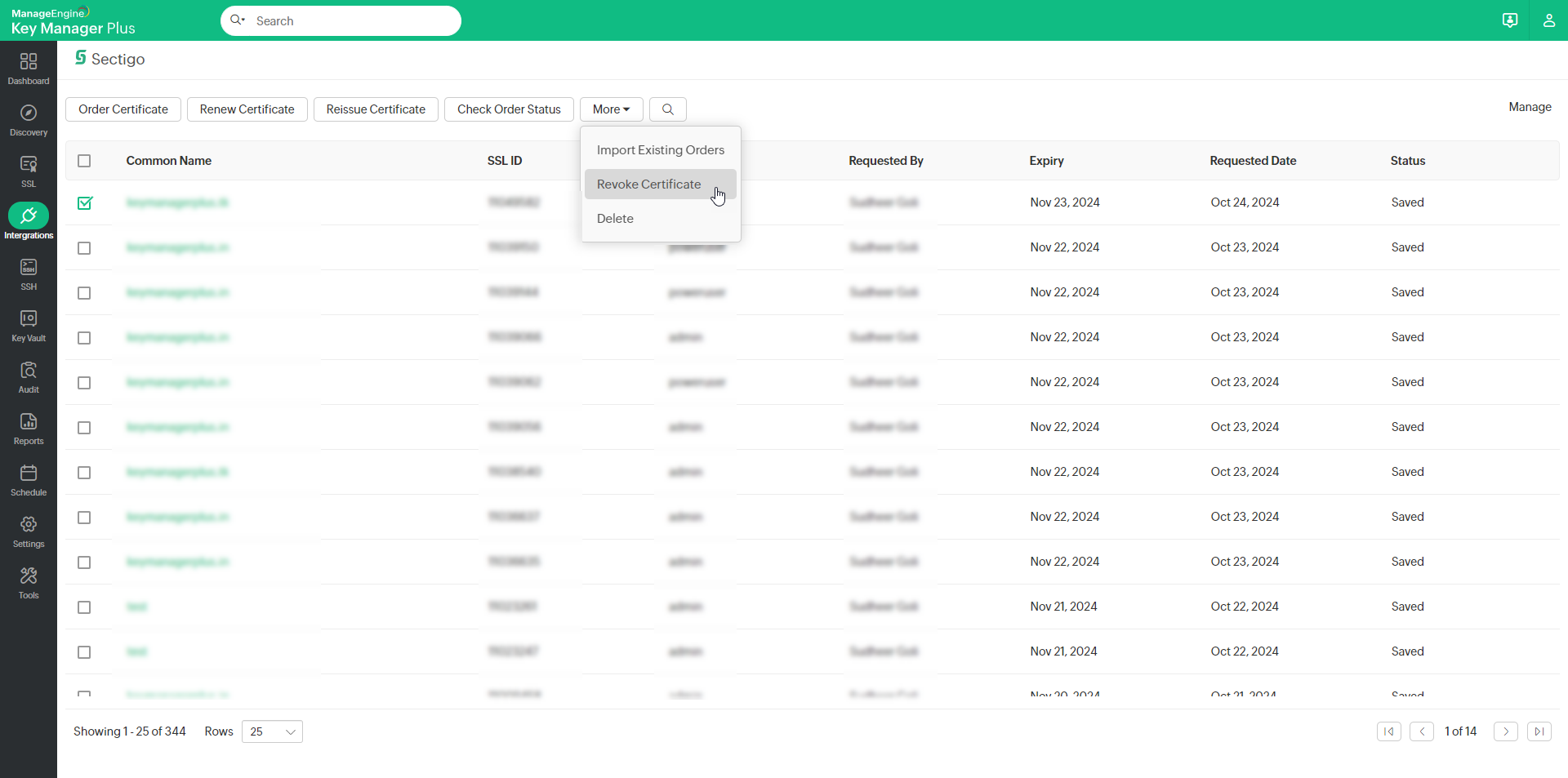Integration with Sectigo Certificate Manager9 minutes to read
Key Manager Plus integrates with Sectigo Certificate Manager (SCM), a PKI management platform that specializes in managing SSL/TLS certificates, SSH keys, and various other digital identities. The integration leverages SCM's API and allows Key Manager Plus to act as a centralized platform where you can import and manage SSL/TLS certificates from the SCM. Automate the lifecycle management of these certificates through diverse operations that are supported by the integration. In this document, you will learn the steps to manage the lifecycle of SSL/TLS certificates issued by the SCM, which includes importing existing orders, creating new certificate requests, deployment, and renewal of certificates. Pre-requisite: Add the following base URL and port as an exception in your firewall/proxy to permit Key Manager Plus to connect to the SCM.
1. Set up Sectigo Certificate Manager Details in Key Manager PlusTo begin managing SSL certificates issued by Sectigo from Key Manager Plus, you must add your SCM account in Key Manager Plus and link your unique Customer URI. If you do not have an SCM account, contact the Sectigo team to sign up and get your login credentials and the Customer URI. If you have an SCM account, follow the below steps to link your account with Key Manager Plus and begin the integration process.
2. Import Existing OrdersIf you have an active SCM account, you likely have existing certificate orders that can be managed using the Sectigo Certificate Manager. Apart from creating new certificate orders, you can also import all the existing orders from the SCM portal and manage them from the Key Manager Plus interface.
3. Create a New Certificate OrderOnce you have successfully linked your SCM account with Key Manager Plus, you can start creating new certificate orders directly from Key Manager Plus. To place a new certificate order:
Note: If you find any mismatch in the SCM-related details that are displayed here, please verify the details in the Sectigo portal and then perform a manual sync under Sectigo >> Manage in the Key Manager Plus interface to refresh the details.
|
|
